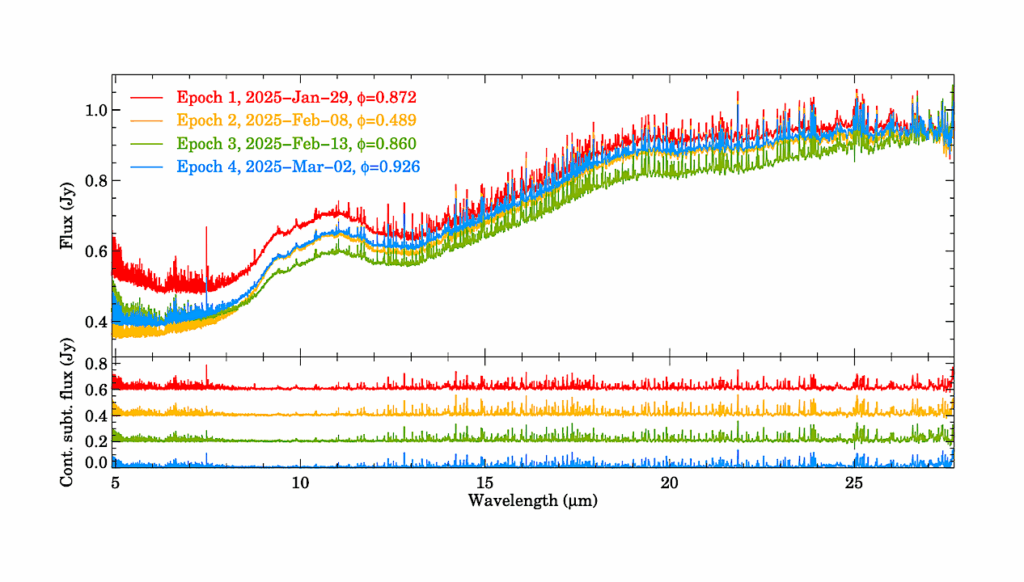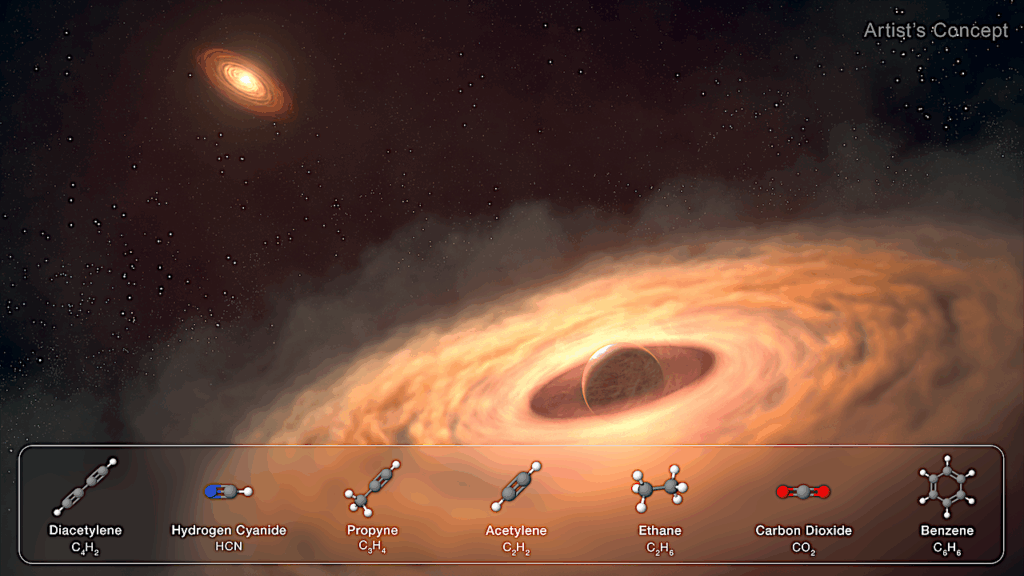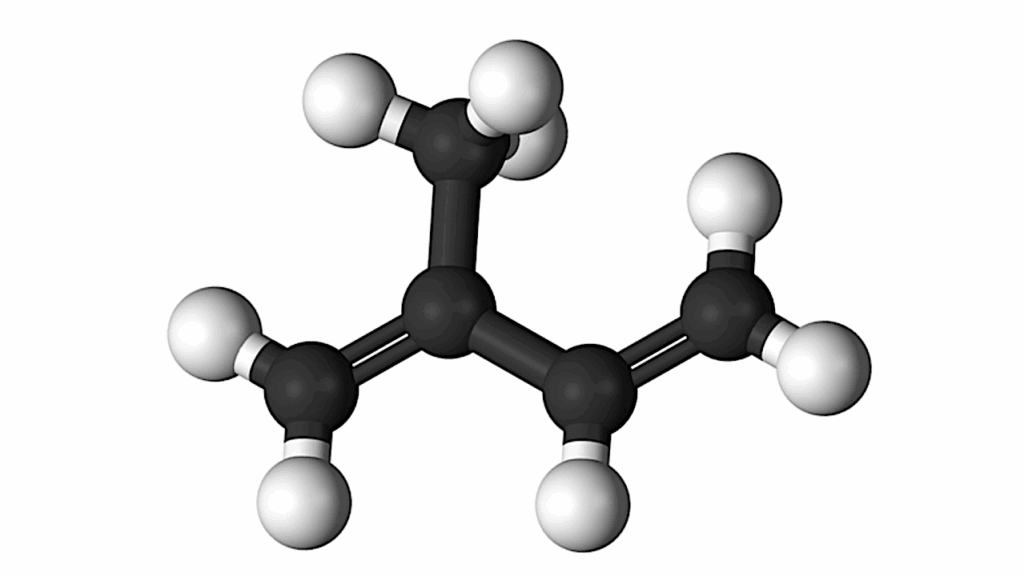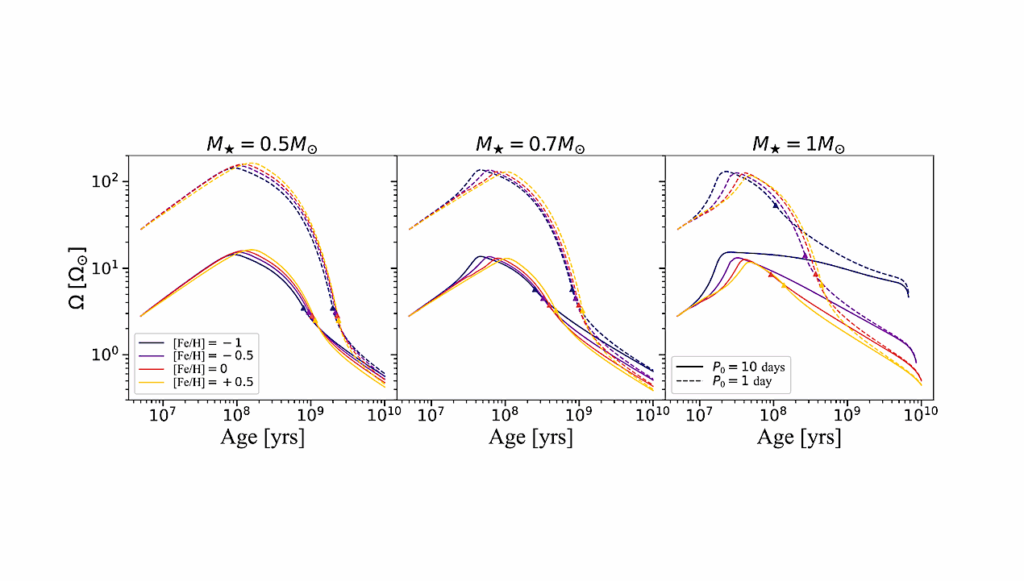Dust From collisions: A Way To Probe The Composition Of Exo-planets?
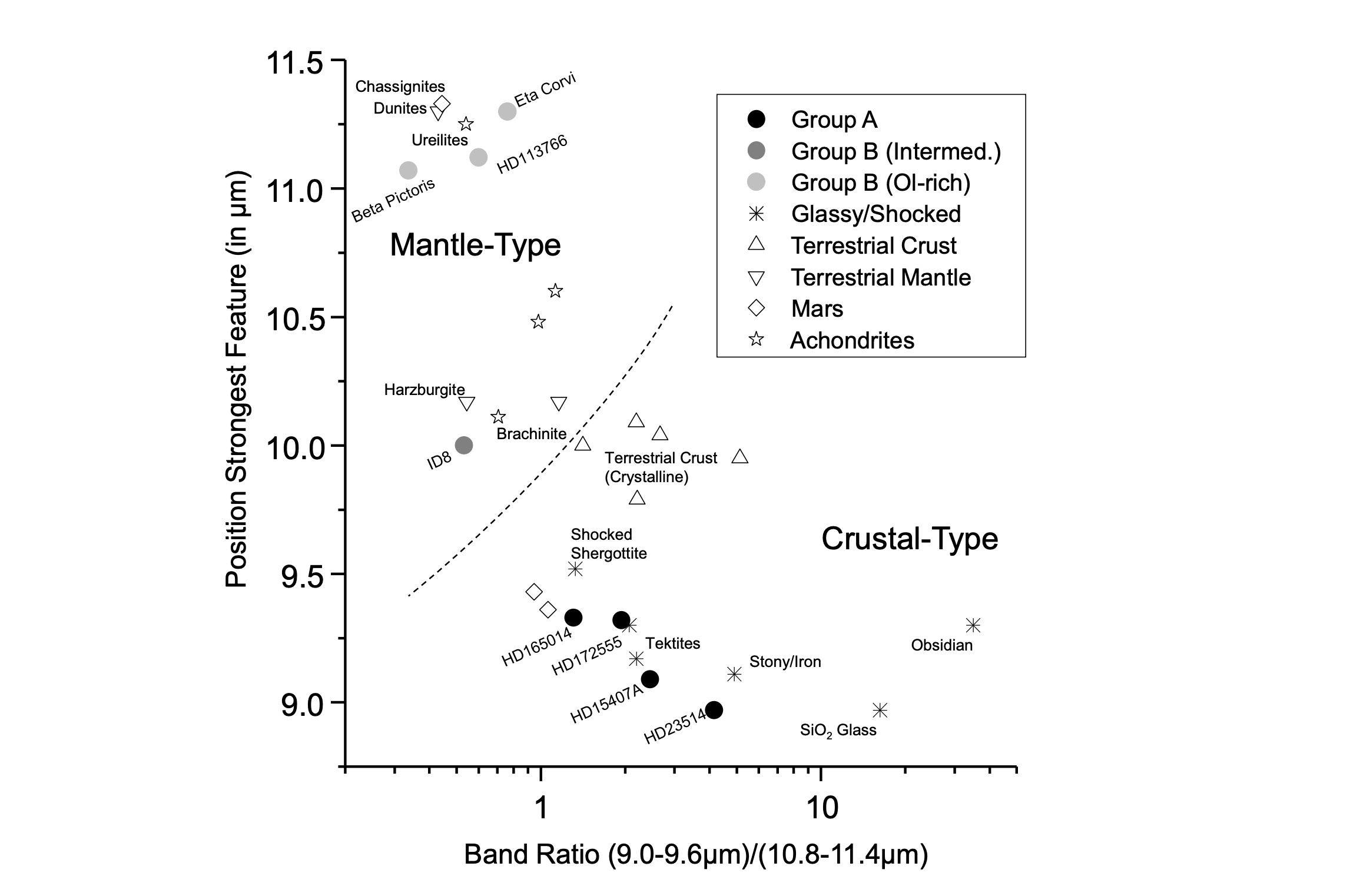
In order to link infrared observations of dust formed during planet formation in debris disks to mid-infrared spectroscopic data of planetary materials from differentiated terrestrial and asteroidal bodies, we obtained absorption spectra of a representative suite of terrestrial crustal and mantle materials, and of typical Martian meteorites.
A series of debris disk spectra characterized by a strong feature in the 9.0-9.5 micron range (HD23514, HD15407a, HD172555 and HD165014), is comparable to materials that underwent shock, collision or high temperature events. These are amorphous materials such as tektites, SiO2-glass, obsidian, and highly shocked shergottites as well as inclusions from mesosiderites (Group A). A second group (BD+20307, Beta Pictoris, HD145263, ID8, HD113766, HD69830, P1121, and Eta Corvi) have strong pyroxene and olivine bands in the 9-12 micron range and is very similar to ultramafic rocks (e.g. harzburgite, dunite)(Group B). This could indicate the occurrence of differentiated materials similar to those in our Solar System in these other systems.
However, mixing of projectile and target material, as well as that of crustal and mantle material has to be taken into account in large scale events like hit-and-run and giant collisions or even large-scale planetary impacts. This could explain the olivine-dominated dust of group B. The crustal-type material of group A would possibly require the stripping of upper layers by grazing-style hit-and run encounters or high energy events like evaporation/condensation in giant collisions.
In tidal disruptions or the involvement of predominantly icy/water bodies the resulting mineral dust would originate mainly in one of the involved planetesimals. This could allow attributing the observed composition to a specific body (such as e.g. Eta Corvi).
A. Morlok, A.B. Mason, M. Anand, C.M. Lisse, E.S. Bullock, M.M. Grady
Subjects: Earth and Planetary Astrophysics (astro-ph.EP)
Cite as: arXiv:2212.13174 [astro-ph.EP]
(or arXiv:2212.13174v1 [astro-ph.EP] for this version)
Journal reference: Icarus (2014), Volume 239, p. 1-14
Related DOI:
https://doi.org/10.1016/j.icarus.2014.05.024
Focus to learn more
Submission history
From: Andreas Morlok
[v1] Mon, 26 Dec 2022 14:23:23 UTC (732 KB)
https://arxiv.org/abs/2212.13174
Astrobiology, Astrochemistry,


